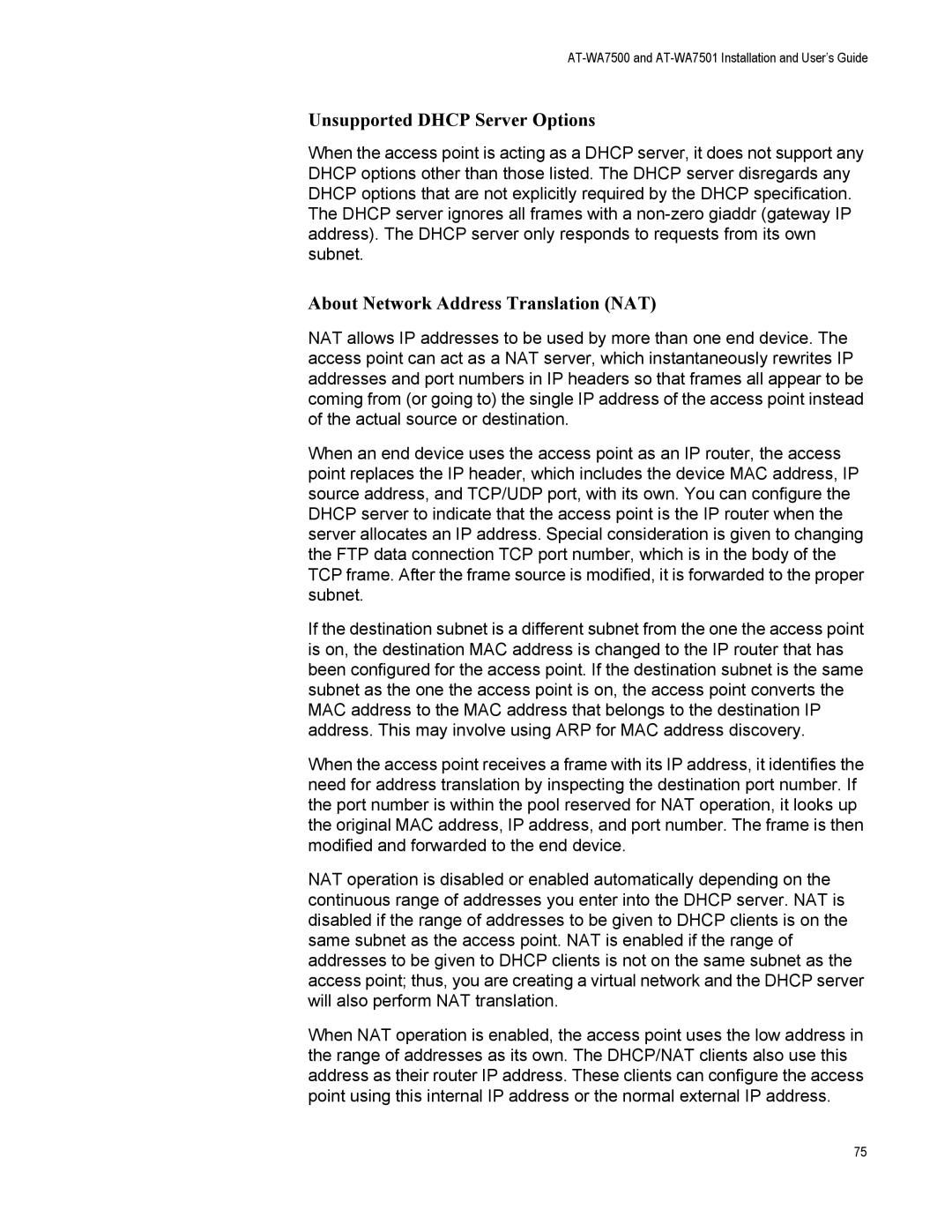AT-WA7500 and AT-WA7501 Installation and User’s Guide
Unsupported DHCP Server Options
When the access point is acting as a DHCP server, it does not support any DHCP options other than those listed. The DHCP server disregards any DHCP options that are not explicitly required by the DHCP specification. The DHCP server ignores all frames with a
About Network Address Translation (NAT)
NAT allows IP addresses to be used by more than one end device. The access point can act as a NAT server, which instantaneously rewrites IP addresses and port numbers in IP headers so that frames all appear to be coming from (or going to) the single IP address of the access point instead of the actual source or destination.
When an end device uses the access point as an IP router, the access point replaces the IP header, which includes the device MAC address, IP source address, and TCP/UDP port, with its own. You can configure the DHCP server to indicate that the access point is the IP router when the server allocates an IP address. Special consideration is given to changing the FTP data connection TCP port number, which is in the body of the TCP frame. After the frame source is modified, it is forwarded to the proper subnet.
If the destination subnet is a different subnet from the one the access point is on, the destination MAC address is changed to the IP router that has been configured for the access point. If the destination subnet is the same subnet as the one the access point is on, the access point converts the MAC address to the MAC address that belongs to the destination IP address. This may involve using ARP for MAC address discovery.
When the access point receives a frame with its IP address, it identifies the need for address translation by inspecting the destination port number. If the port number is within the pool reserved for NAT operation, it looks up the original MAC address, IP address, and port number. The frame is then modified and forwarded to the end device.
NAT operation is disabled or enabled automatically depending on the continuous range of addresses you enter into the DHCP server. NAT is disabled if the range of addresses to be given to DHCP clients is on the same subnet as the access point. NAT is enabled if the range of addresses to be given to DHCP clients is not on the same subnet as the access point; thus, you are creating a virtual network and the DHCP server will also perform NAT translation.
When NAT operation is enabled, the access point uses the low address in the range of addresses as its own. The DHCP/NAT clients also use this address as their router IP address. These clients can configure the access point using this internal IP address or the normal external IP address.
75
